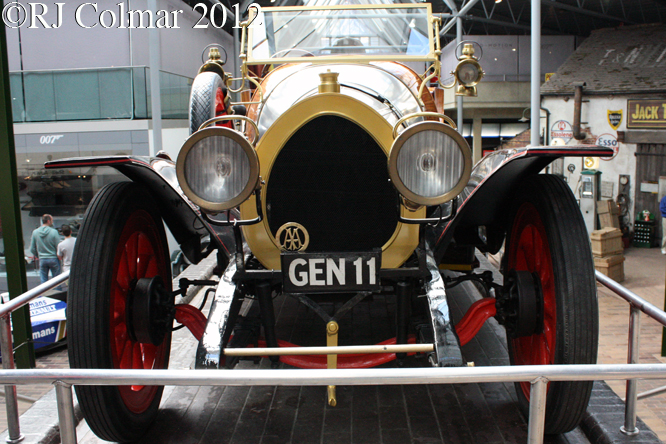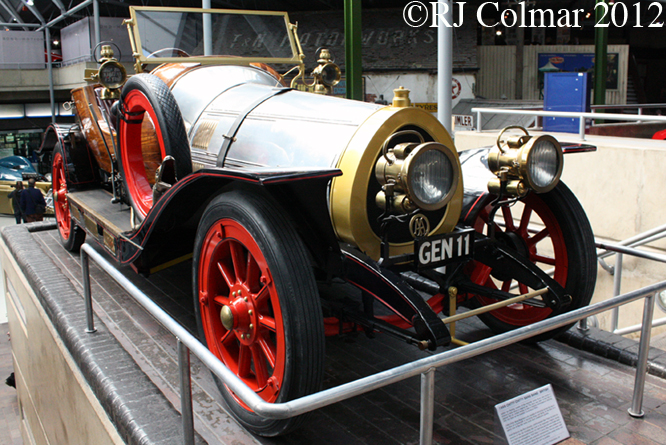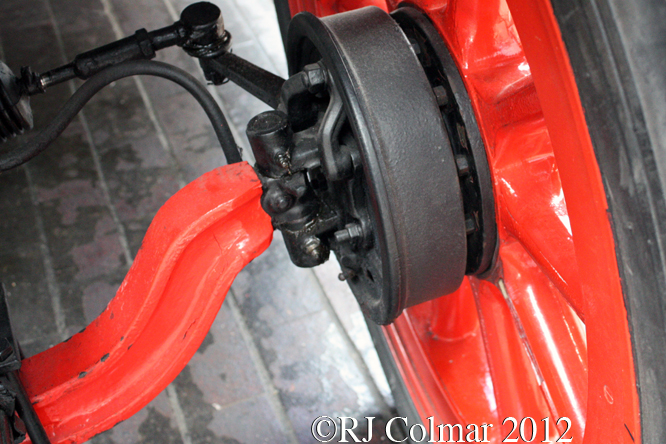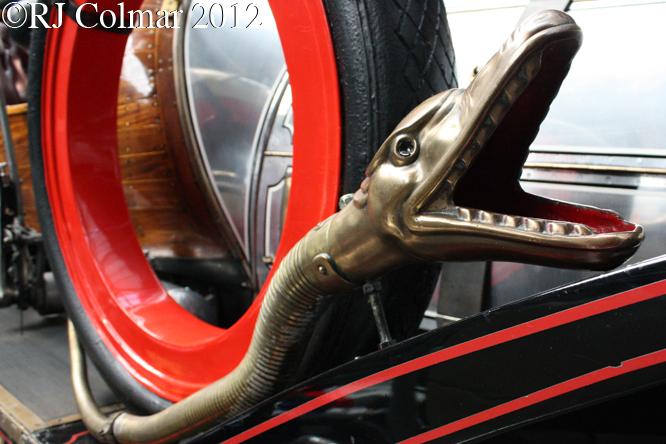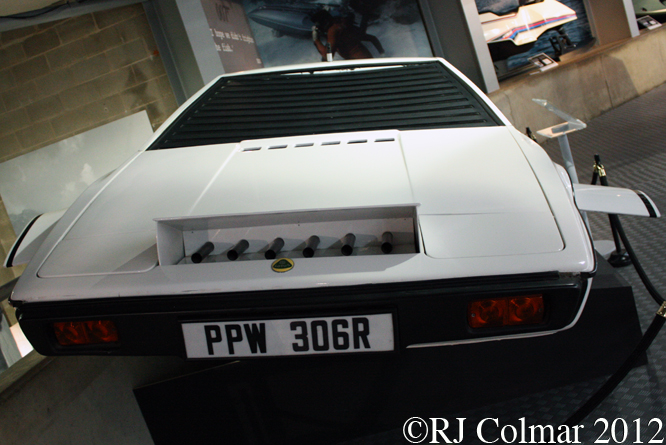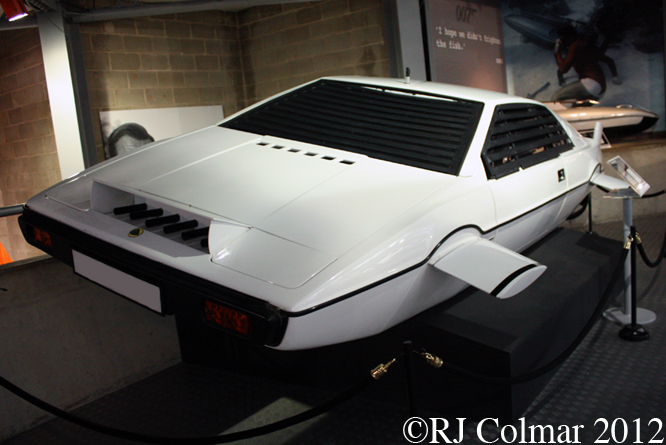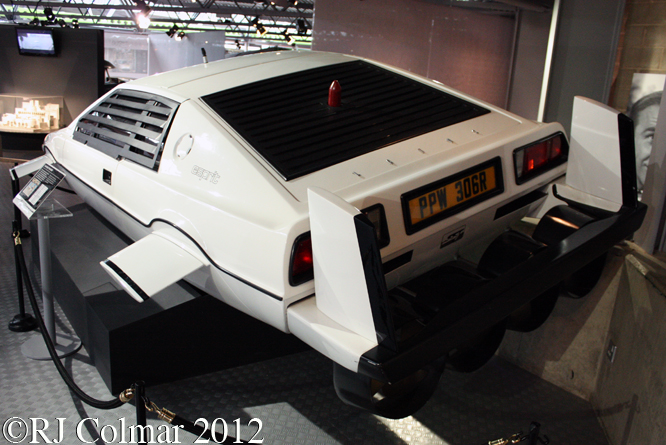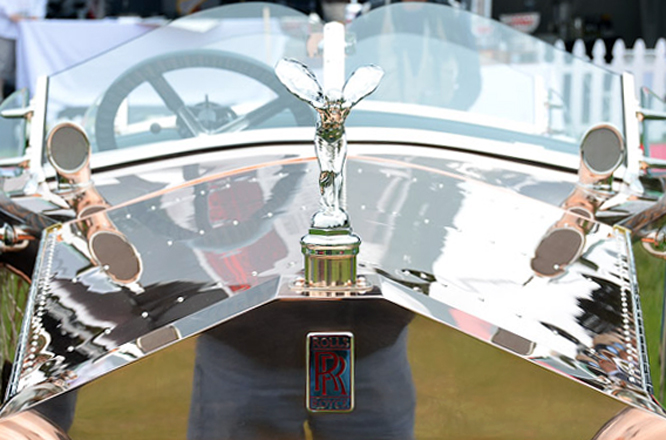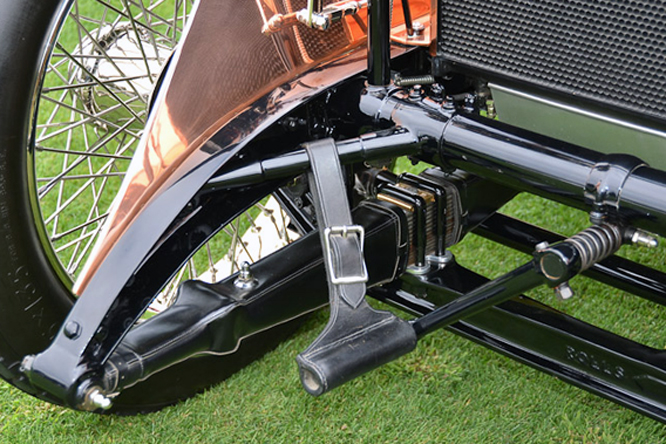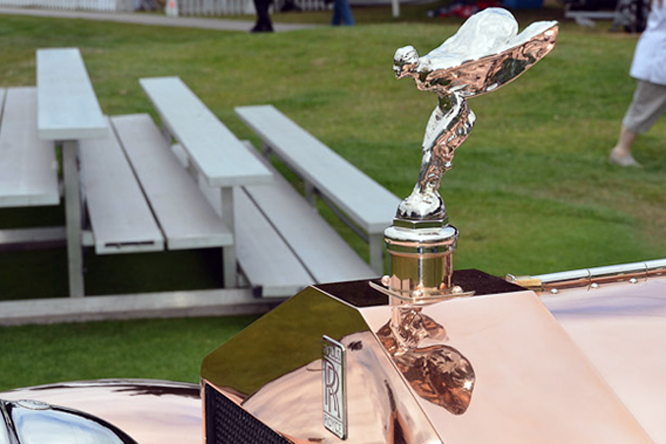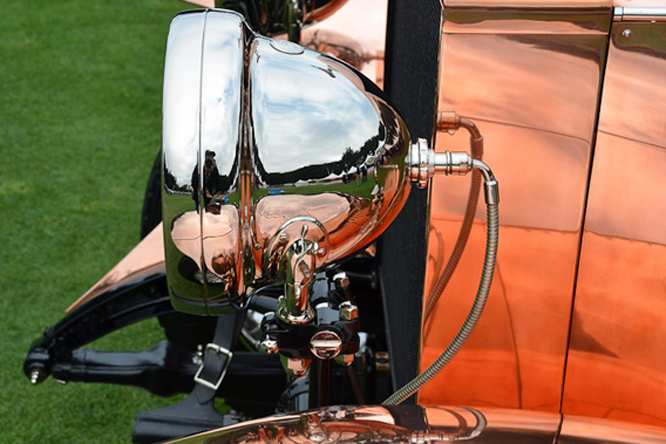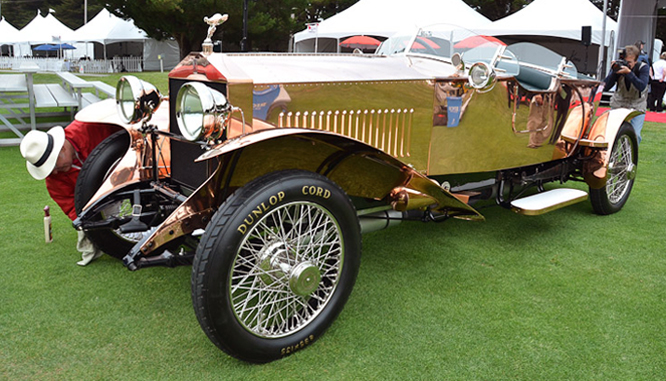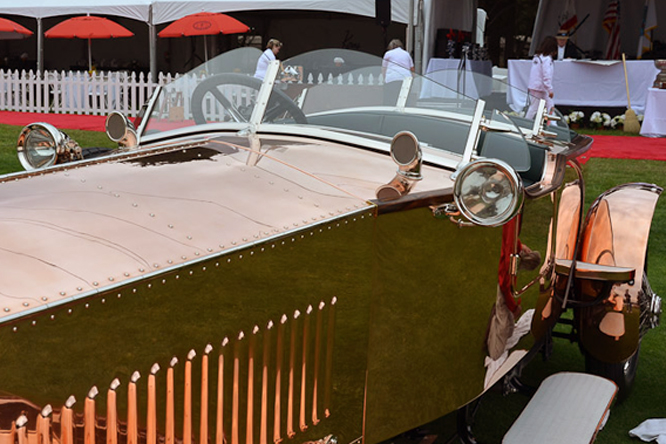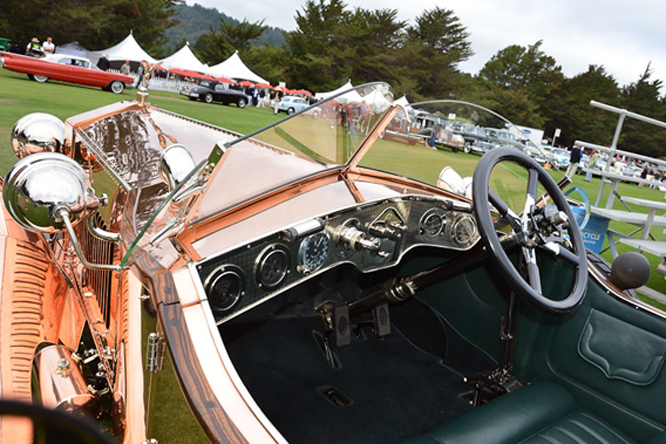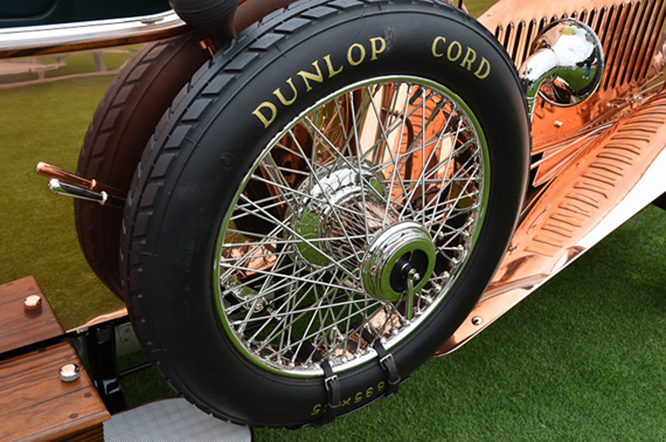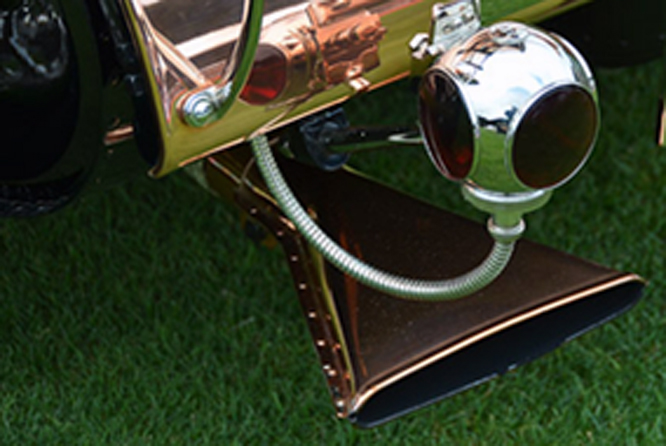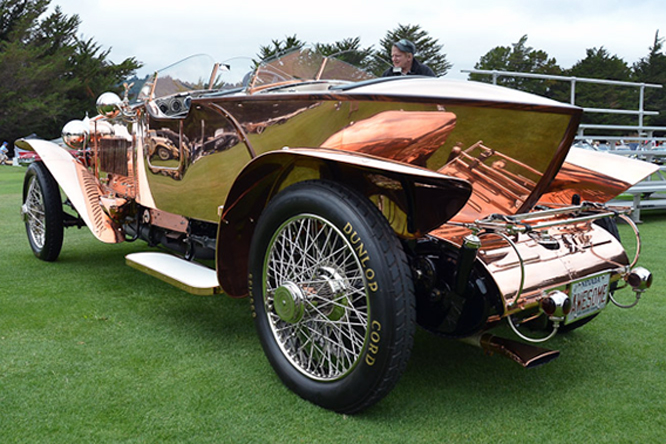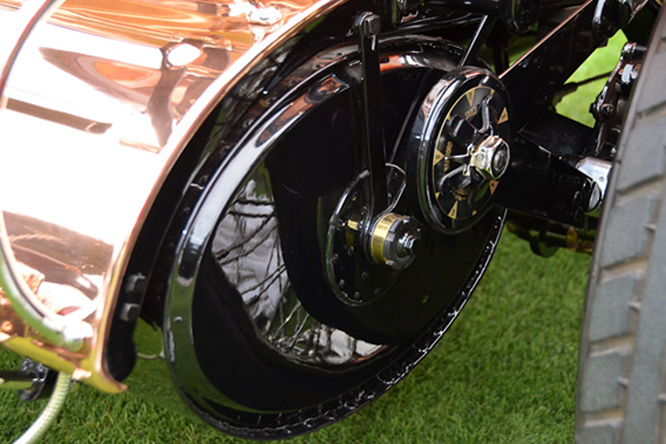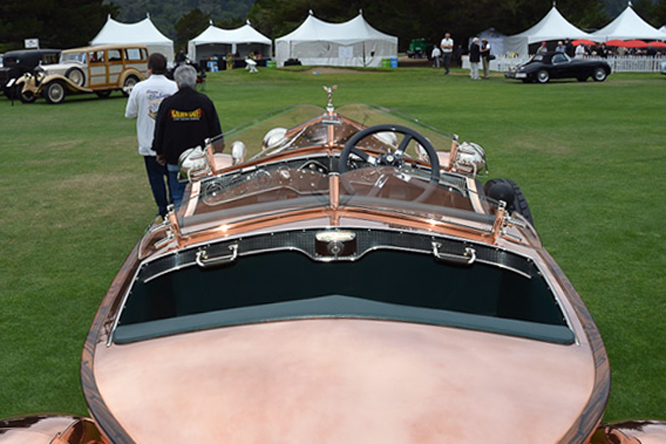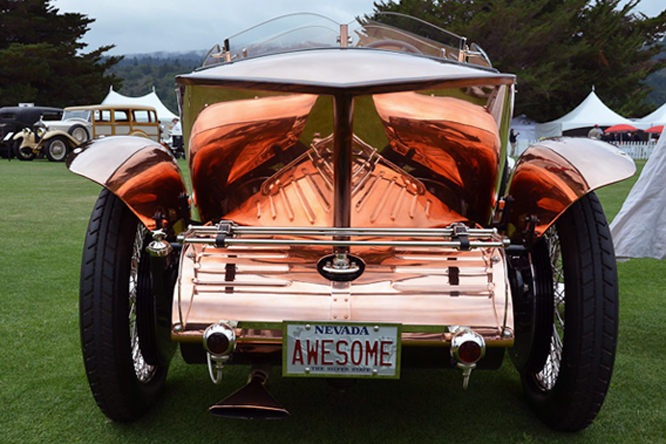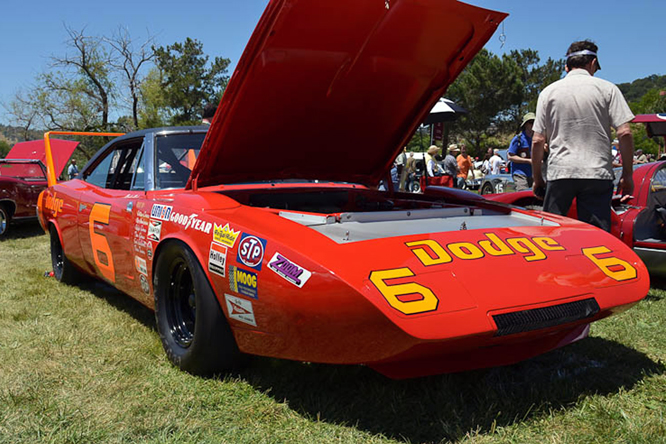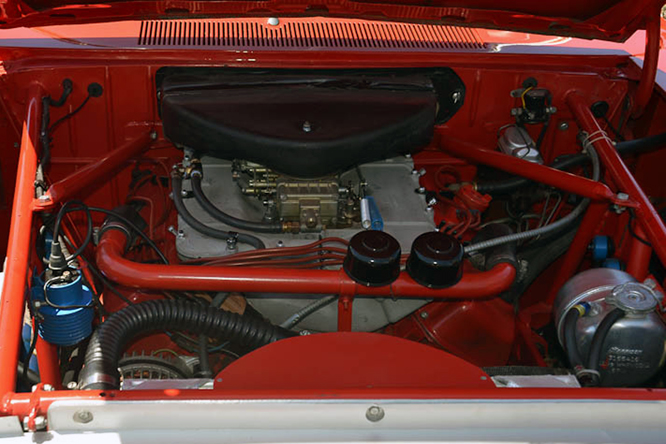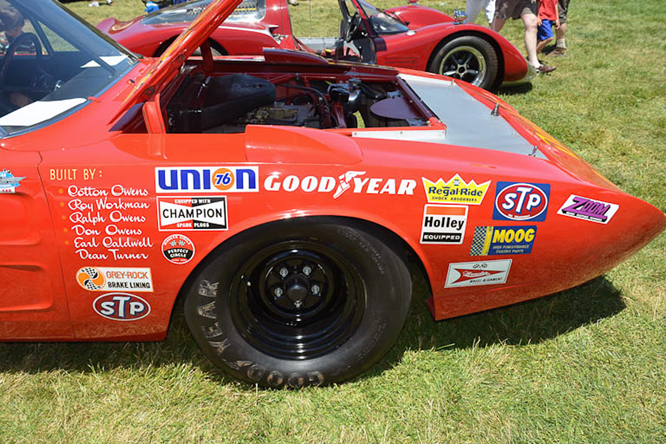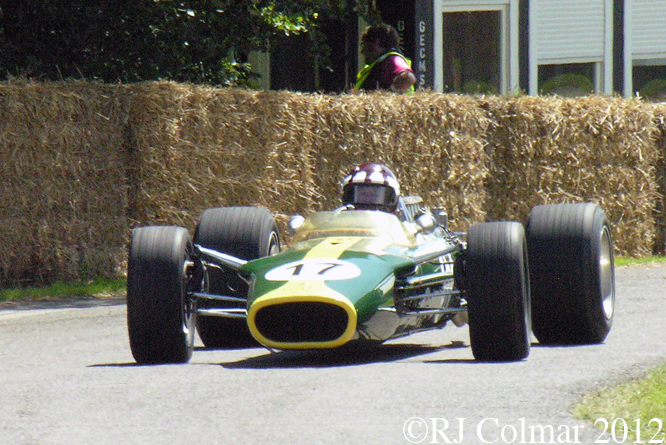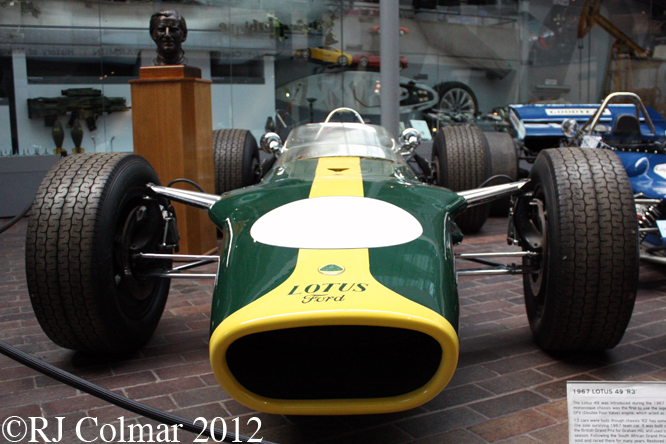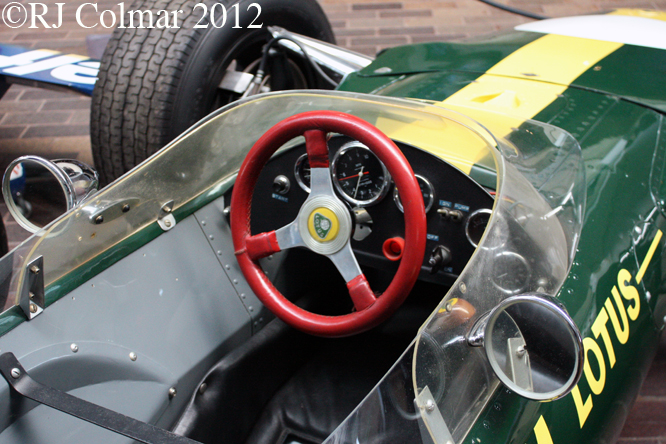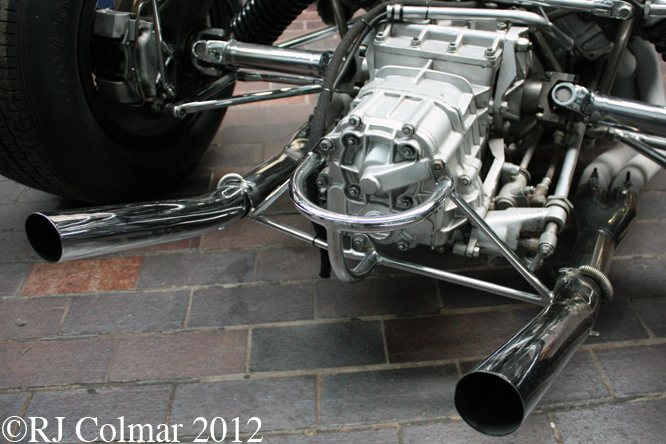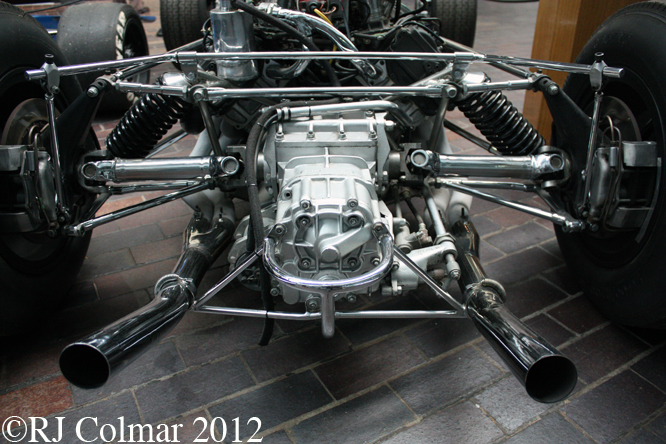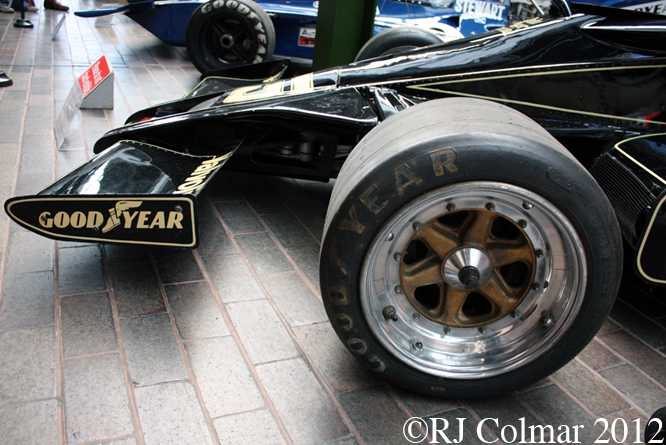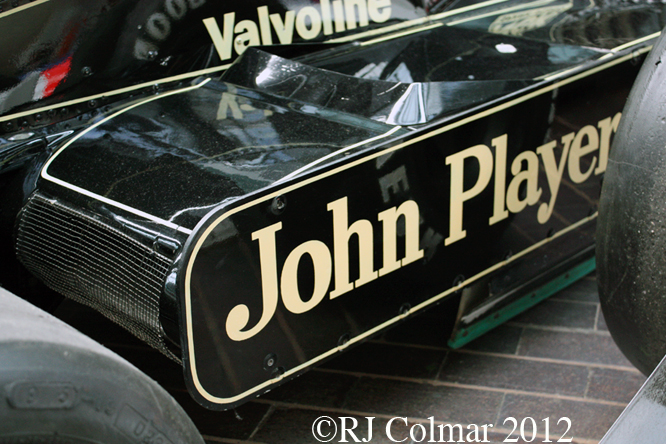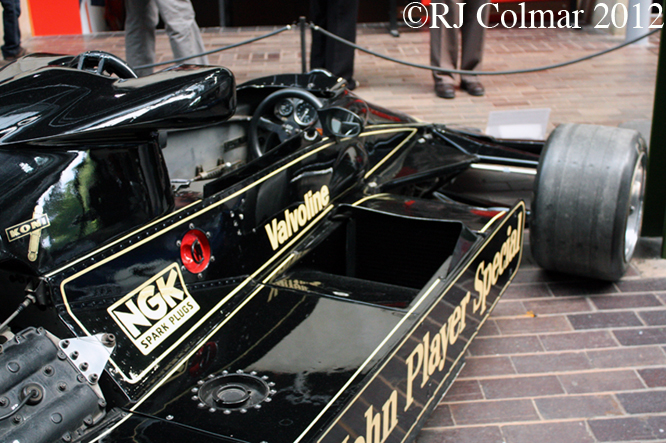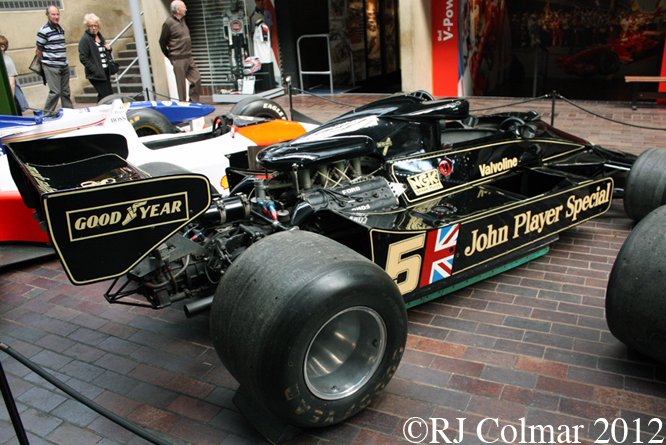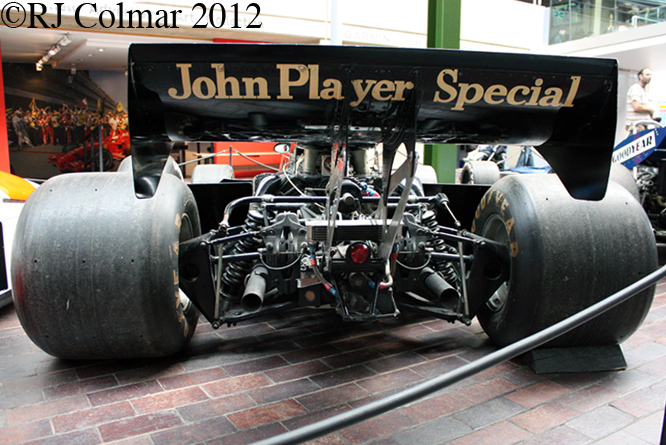Beaulieu Abbey was built on land bequeathed by King John to a group of Cistercian monks, more strict in their vows of Poverty, Chastity and Obedience than Benedict monks, in 1204. The newly self appointed defender of the faith and head of the Church of England, King Henry the VIII, dissolved the abbey and had it destroyed in the 1530’s and the Beaulieu estate passed into the hands of secularist Thomas Wriothesley in 1538 who converted the monastry Great Gatehouse into a dwelling now known as the Palace House. His ancestor the present Lord Montagu created a Motor Museum in 1956 as a tribute to his father the Motoring pioneer John, Second Baron Montagu of Beaulieu.

The last, only, time I visited Beaulieu was on a rainy day in June 1974, I remember reading about Niki Lauda’s first victory driving a Ferrari 312 B3, at the Spanish Grand Prix, in Motor Sport Magazine in the back of the car on the way down. This time my trip was fueled by the Simply Italian parade featured on GALPOT yesterday and a need to replenish my stock of Ferrari images which are getting low. The only Ferrari in the National Motor Museum last Sunday was this replica 1996 F310, interestingly the nose is of the earlier type than the replica F310 that sits in the Haynes International Museum. This low nose replica matches the form of the nose that was fitted to Micheal Schumachers F310 when he won the 1996 Spanish Grand Prix, his first victory in a Ferrari.
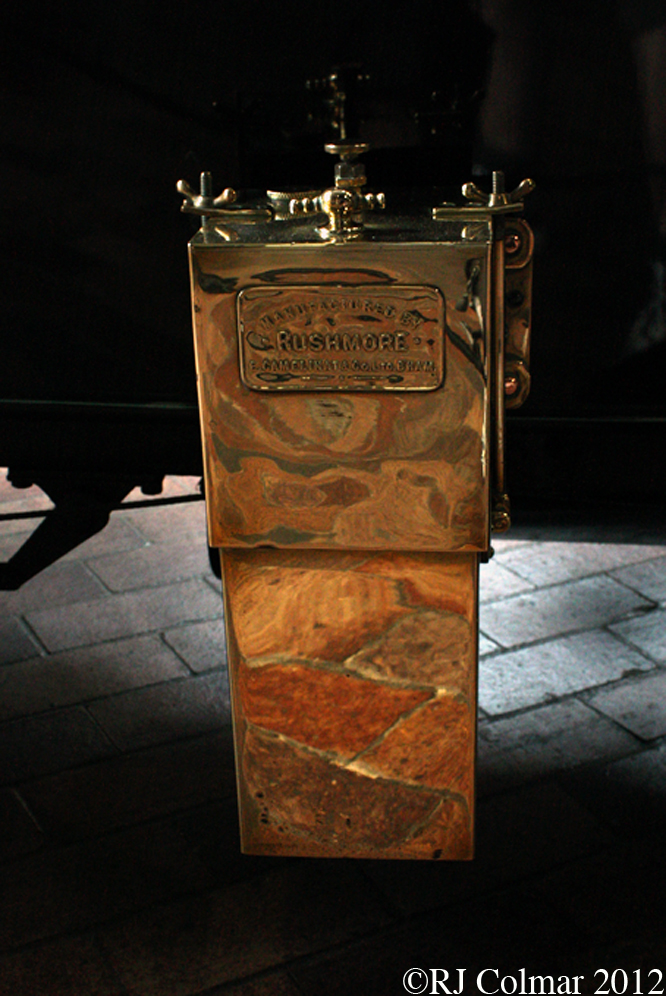
Seems like every time I leave the house on some motor related expedition I come back with far more questions than answers. This cool piece of brass work, I presume it’s brass, was attached to the side of a 1910 Bugatti T15. The top looks a tad sophisticated for this to be a simple motor oil or motor spirit receptacle, if you have any idea’s what it is please chime in below.
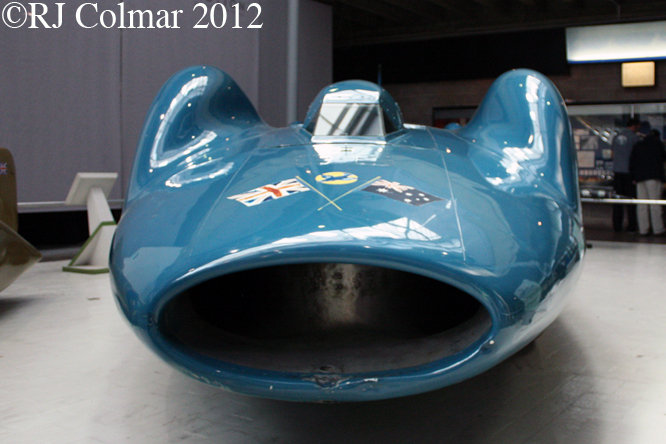
My earliest flights of imagination into unadulterated raw speed were undoubtedly inspired by the exploits of Donald Campbell to reach 500 mph in the 4,450hp Bluebird Norris Proteus CN7 in the early 1960’s, being a terrible tease I’ll save the outcome of his attempt for a future blog.
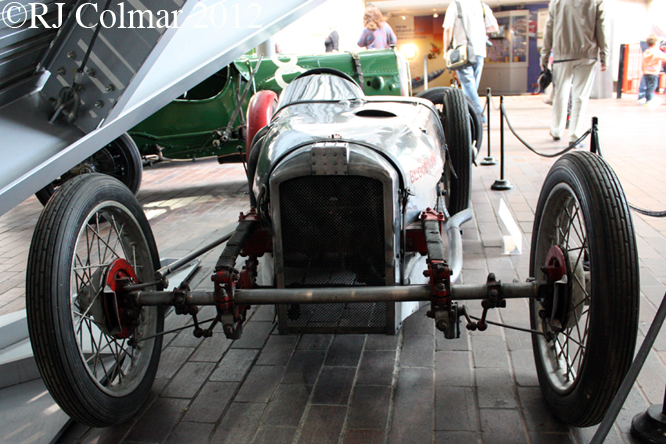
Thanks to GALPOT reader Tim Murray I have been enjoying a book called Special by John Bolster, John built ‘various devices’ himself including Bloody Mary seen here, a successful JAP powered ‘device’ built in the early 1930’s. I’ll save full details for another occasion save to say John was the only one who had the confidence in his own work and was brave enough to take this device to victory lane in sprint and hillclimb event’s !

Like all worthwhile publicly supported institutions the National Motor Museum consumes cash by the case load in order to keep it’s exhibits in good order, and runs a sponsorship scheme for individual vehicles,you can find out more about sponsoring a vehicle at the National Motor Museum on this link. I’d like to thank those who sponsored this 1966 Austin A40 Farina Countryman, known as Tubby, on behalf of Maurice Wycliff Timmins. One just like it called Daisy played a huge role in my own formative years.
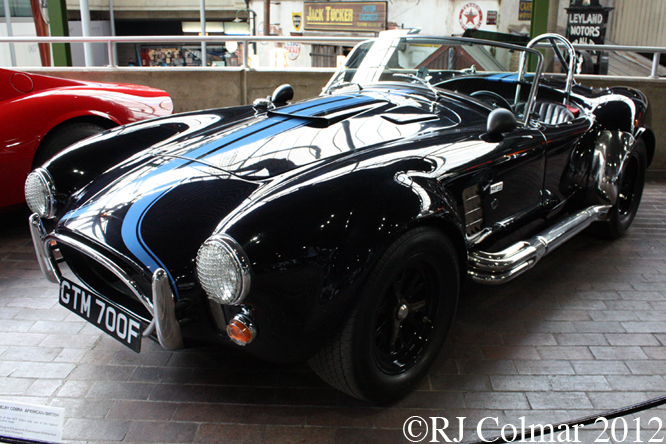
It was sad to learn of the passing of Carroll Shelby last week, among his many achievements was the bringing together of a little AC roadster and a huge 7 litre / 427 Ford V8 which became known as the AC Shelby Cobra. Today original versions of these much copied vehicles can fetch over a US$ 1,000,000. The restored 1965 vehicle seen here was fitted with the cheaper 7.01 litre 428 cui Ford V8 was once the property of part time circuit and drag racer John Woolfe who had two such cars, the left hand drive above also seen in this link and a right hand drive registered GTM777F which can be seen about to get whipped by a much smaller engined dragster “Hustler” driven by ‘Tex’ Blake in the photo linked here. Any one interested in learning about the UK drag scene will find this link to the John Woolfe Racing site quite fascinating.
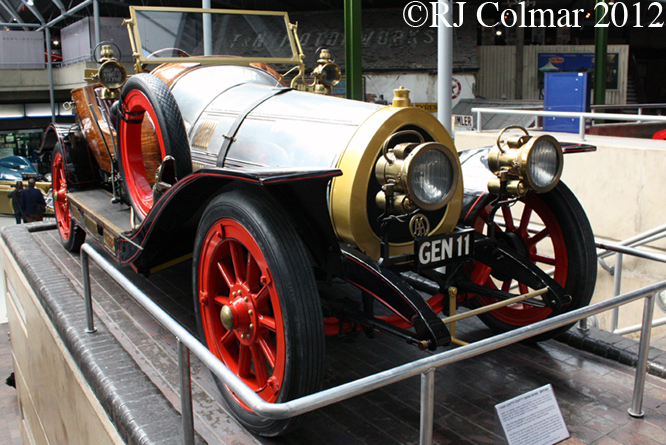
In one of my more romantic moments I once proposed to some one after seeing the most fantasmagorical Chitty Chitty Bang Bang on television, we are no longer together but we remain friends. This is one of several film stars at Beaulieu I’ll be covering some of them in more detail next Sunday. Apparently the “GEN 11” registration is now to be found on a 2011 Honda Jazz.

I’m not a big time gambler but I am now the proud owner of a raffle ticket to win this Mini Convertible, I also hold tickets to win a Morgan, and Triumph SE one day my number is bound to come up 
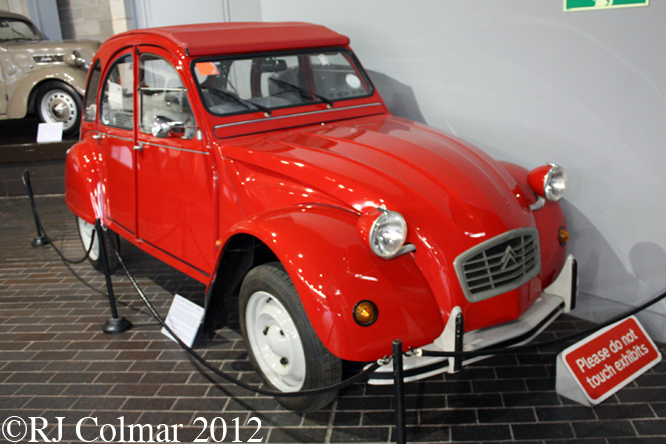
I’ll end today’s over view of the National Motor Museum with this Citroën 2CV6 Speciale, I have probably had more fun and adventures in this type of vehicle than any other. This 1986 2CV6 Speciale, just 24 miles on the clock, is barely out of it’s wrapping with delivery stickers and protective wax still on the windows, was put straight into storage after it was purchased.
The Second Baron of Beaulieu John Montagu in 1906 predicted ‘Europe in a few years time will become for the motorist one vast Holiday area’. How right he was and how lucky we automobilists are that his son Edward The 3rd Baron Montagu of Beaulieu founded the National Motor Museum, a fascinating part of that tapestry.
Thanks for joining me on this ‘Automobilists Cave edition of “Gettin’ a li’l psycho on tyres”. I hope you will join me tomorrow when I’ll be featuring a vintage MG. Don’t forget to come back now !
PS Many thanks to Allan Lupton at The Nostalgia Forum for informing me the receptacle I asked about above is a Rushmore acetylene generator for the acetylene lamps that proved more reliable than electric lamps of the period.
